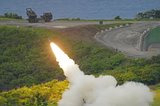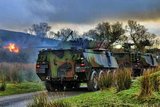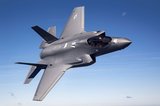Two companies compete for US Army cryptographic key orders
The US Army is making progress in its effort to field the NGLD-M encryption key to manage key material and mission planning data, (Photo: US Army)
Sierra Nevada and General Dynamics Mission Systems will compete for orders to provide the network-enabled Next Generation Load Device-Medium (NGLD-M) cryptographic key for the US Army, the DoD announced on 10 August.
The contract has an overall value of $744.22 million.
The US Army issued an RfP for NGLD-M in November 2020. A total of five bids were received, among them CACI offering its Mission Crypto Loader.
Work locations and funding will be determined with each order, with an estimated completion date of 8 August 2031.
The US Army stated when it released the RfP that the maximum requirement is for 265,000 NGLD-M units.
NGLD-M is an attempt to modernise cryptographic key load devices that are essential for joint service network security. It will replace the ageing Simple Key Loader which dates from the early 2000s.
According to the US Army, the new key will be a ruggedised, battery-powered, handheld device to manage and transfer cryptographic key material and mission planning data.
Modern cryptographic algorithms will be transferred by NGLD-M to counter the threat posed by increased proliferation of cyber and EW threats.
NGLD-M will support all command echelons across the US armed forces, other US federal government agencies and allied foreign militaries.
More from Defence Notes
-
![How might European countries look to tackle drone incursions?]()
How might European countries look to tackle drone incursions?
Disruption of infrastructure in Europe, whether by cyberattack, physical damage to pipelines or uncrewed aerial vehicles flying over major airports, as has happened more recently, is on the rise. What is the most effective way of countering the aerial aspect of this not-so-open warfare?
-
![Taiwan approved for $11 billion weapon purchase from US]()
Taiwan approved for $11 billion weapon purchase from US
The US State Department’s approval of a multi-billion-dollar sale of weapons to Taiwan includes tactical mission networks equipment, uncrewed aerial systems, artillery rocket systems and self-propelled howitzers as well as anti-tank guided missiles.
-
![Ireland spells out $2.3 billion shopping list in five-year defence spending plan]()
Ireland spells out $2.3 billion shopping list in five-year defence spending plan
Ireland’s multi-annual investment in capital defence spending is set to rise from €300m in 2026 to €360m in 2029–2030 with major upgrades across land, air, maritime and cyber domains.
-
![Canada to deepen integration of multi-domain capabilities to strengthen its defences]()
Canada to deepen integration of multi-domain capabilities to strengthen its defences
The Canadian Department of National Defence has created new organisations to manage the procurement and integration of all-domain solutions and allocated US$258.33 million to strengthen production capacities.
-
![US National Security Strategy prioritises advanced military capabilities and national industry]()
US National Security Strategy prioritises advanced military capabilities and national industry
The 2025 NSS has emphasised investment in the US nuclear and air defence inventory and national industry, but it leaves multiple unanswered questions on how the White House will implement this approach.
-
![Canada set to look away from its neighbour and across the Atlantic for partners]()
Canada set to look away from its neighbour and across the Atlantic for partners
While non-EU UK struggles to join the Security Action for Europe initiative, which provides loans for defence programmes, Canada has become the first country outside Europe to get access – and did so for a nominal fee.


























